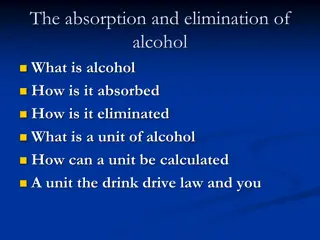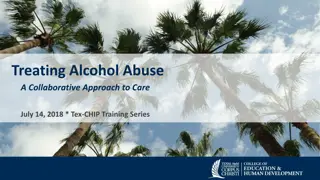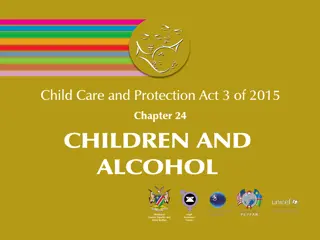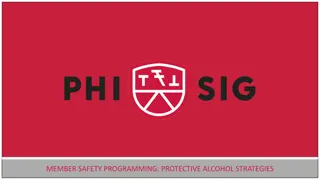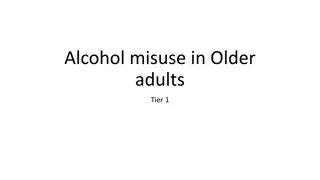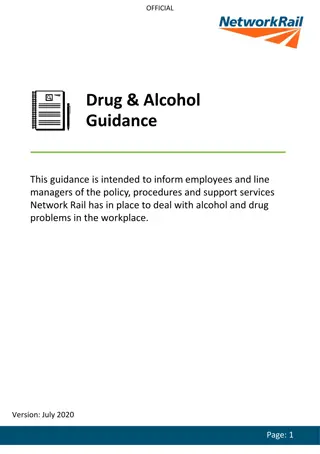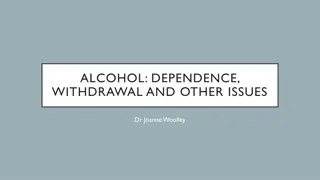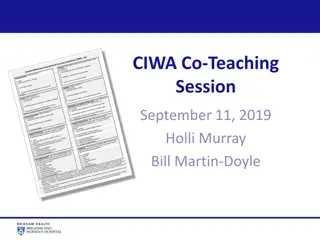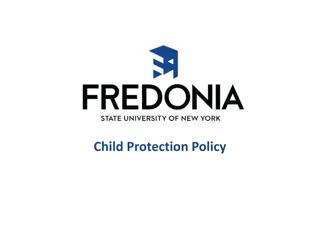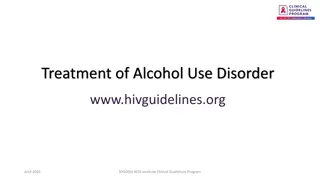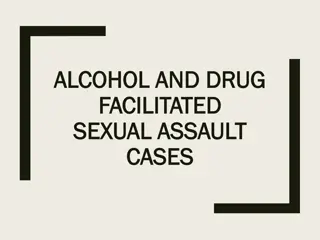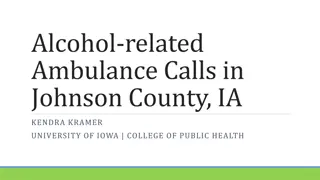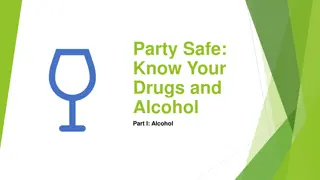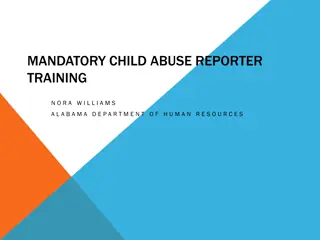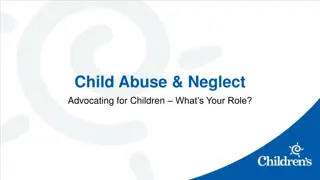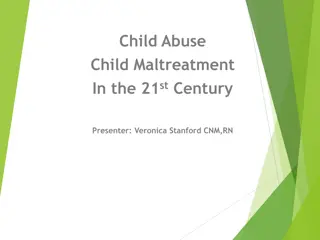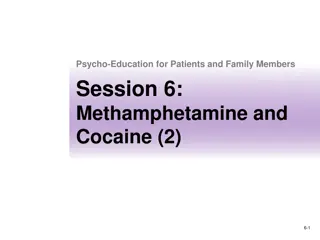Collaborative Approach to Treating Alcohol Abuse
A comprehensive approach to treating alcohol abuse involves accurate assessment, careful management of withdrawal, addressing coexisting concerns, patient education, and appropriate referrals. Interacting with clients in a non-judgmental and trusting manner, understanding alcoholism as an illness, and implementing a treatment plan that involves primary care providers can lead to successful outcomes in reducing alcohol abuse, managing related health issues, and supporting patients and their families effectively.
Download Presentation

Please find below an Image/Link to download the presentation.
The content on the website is provided AS IS for your information and personal use only. It may not be sold, licensed, or shared on other websites without obtaining consent from the author. Download presentation by click this link. If you encounter any issues during the download, it is possible that the publisher has removed the file from their server.
E N D
Presentation Transcript
Treating Alcohol Abuse A Collaborative Approach to Care July 14, 2018 * Tex-CHIP Training Series
Understanding Provider Role in Treating Alcohol Abuse Accurate assessment When there is to be withdrawal from alcohol, careful management is essential to prevent life-threatening events Address coexisting concerns Psychological Neurological Physical Anemia Liver disease Patient Education Appropriate Referral: Mental Health Clinician/Licensed Chemical Dependency Counselor Support Groups for Individuals and Significant Others
Considerations when Interacting with Clients Build trust Non-judgmental Understand alcoholism and addictions are illnesses, not character flaws Need for patient & family education related to substance abuse and related health issues.
Our Treatment Plan Healthcare Domain: Primary Care Provider: Nurse Practitioner Goals: Interventions: Objective: Decrease in alcohol abuse as indicated by client (and family) report of: (a)Adherence to the recovery program chosen by patient and treatment team could be abstinence based or harm-reduction. a) (According to the case study) a referral for a Psych. Eval. Engage with the development and b) Schedule a B/P follow up check very soon to determine level of hypertension. That will lead to other interventions such as medication, nutrition consult, education and reinforcement related to exercise and stress management. adherence to a (b) As the PCP the objectives will extend to maintaining a B/P within normal ranges via the use of prescribed interventions (pharmacologic and/or non-pharm.) comprehensive treatment plan that addresses: (c) Symptoms of depression identified in the case study will be in the process of resolving, using specific, realistic, measurable/quantifiable benchmarks. Example: Able to sleep at least 6 hours each night. (This might be increased once stabilized at 6.) a) alcohol abuse b)symptoms of depression c) hypertension c) Patient education related to health issues and potential risks with ongoing use of alcohol at high levels. (Timing of this is important.) If needed, the PCP may need to consider the use of psychotropic medications, carefully managed in the context of the alcohol abuse and whether or not abstinence or harm reduction was selected and the degree of adherence.
Measuring Outcomes/ Success Follow up with B/P to determine if further intervention is needed. Follow up with patient and family to insure follow-up with psychiatric evaluation. Pending the outcome of the evaluation, determine ways for PCP to support Matthew and his family. Depending on the treatment route, it may be a harm-reduction approach or abstinence-based. The PCP needs to be aware and continue to evaluate the needs of Matthew for the PCP intervention.
Communication from Counselors Results from the psychiatric evaluation. Recommended treatment interventions.



